In Defense of the Cassowary, the Maligned Killer of the Bird World

Bloodthirsty killer or misunderstood introvert? (Image: Steve Wilson/Flickr)
Do a quick Google search of “cassowary” and other than the Wikipedia entry on the bird, you will find that almost everything written about Australia’s heaviest bird has to do with its reputation as a killer of men. In the annals of birds that are thought to be a dangerous threat to humans, cassowaries may just be king. And given that cassowaries are the third largest bird species on the planet, looking like some sort of prehistoric holdover, it’s no wonder they are so often painted as avian monsters.
The popular conception of cassowaries is not wholly inaccurate, but aggressive, killer beasts they are not. Cassowaries are a species of large, flightless bird whose size is only eclipsed by emus and ostriches. Some females can stand almost seven feet tall, and weigh almost 200 pounds. They have large bodies held up on long, thick legs that end in three frighteningly large talons and their heads are topped with tall crests that make them look more dinosaur than bird.

Preferring to stick to deep rainforest regions, cassowaries can only be found naturally in three areas in the world: New Guinea, the surrounding islands (though they were probably brought there by humans), and northeast Australia. Their rarity–they are considered endangered to vulnerable in these habitats– and the mystery it engenders, is one of the reasons the cassowary’s bad reputation has endured. But it’s not the only reason.
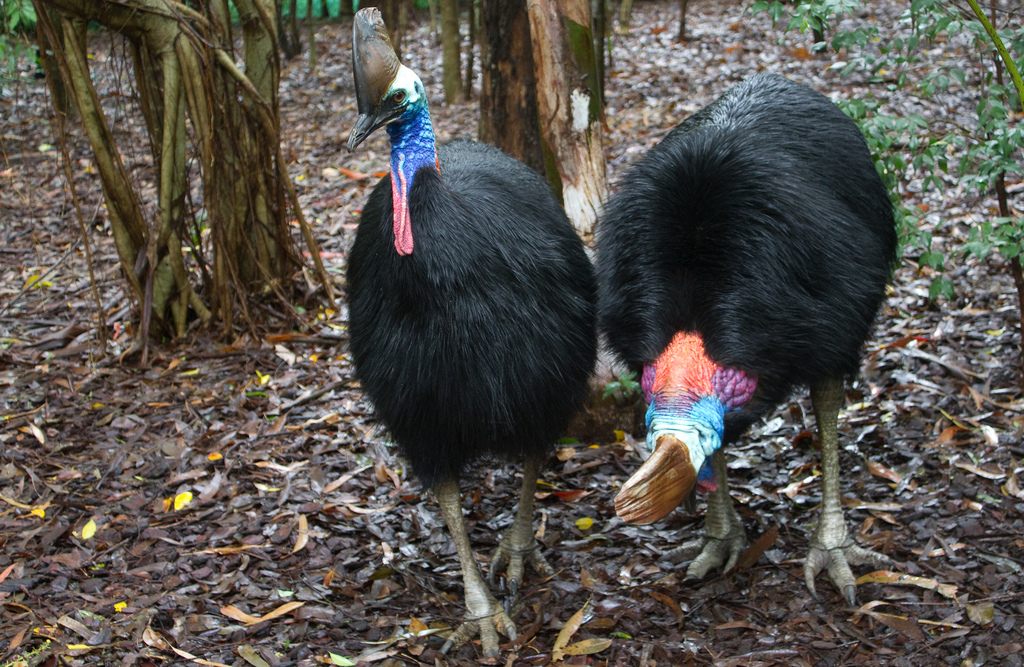
Like feathery dinosaurs. (Image: Brian Gratwicke/Flickr)
“One thing about cassowaries is that they’re a real pain in the ass,” says Dr. David Westcott, a senior research scientist at the Commonwealth Scientific and Industrial Research Organization, who has been studying the birds for more than 20 years. “Studying them in the wild is really, really difficult. Because they don’t like people, and there’s not a lot of them in any one spot. They’re hard to see in the forest even when they’re right in front of you.”
Elusive they may be, but they’re not out for blood. Cassowaries are not hunters, they are foragers. While they are essentially omnivorous, eating just about anything of value they can wrap their beaks around, their diet consists mainly of fruit they find on the forest floor. “You’d have to be a baby bird fluttering around on the ground before a cassowary would be a serious threat to you,” says Westcott.
So if wild cassowaries are no more aggressive or violent than other large animals, why are they still considered to be casual killers? Well, because there is some precedent. Westcott puts it simply, “One of the things that people cue into is this business that they kill people. That’s not a myth.”
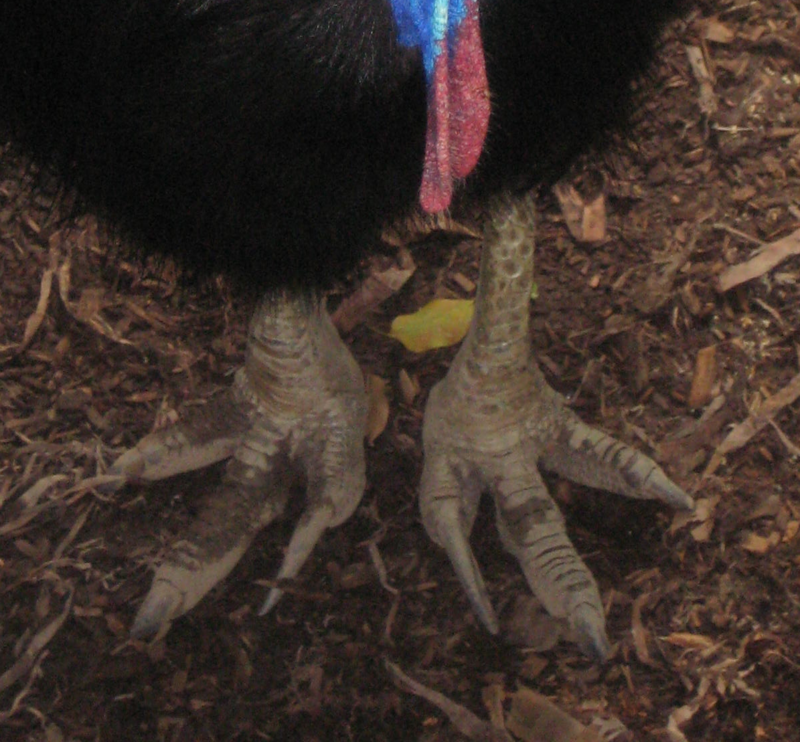
Dinosaur feet. (Image: peterdownunder/Wikipedia)
It has been estimated that there have been hundreds of cassowary attacks in Australia since the late 19th century, but there has actually only been one recorded instance of a cassowary killing a human. It occurred in April 1926, around Queensland, Australia, when teenage Philip McLean and his little brother foolishly attacked a cassowary.
Westcott says they shot the bird, other sources say they tried to club it, but either way, the cassowary survived. In response to the attack it turned around and used one of its powerful legs to kill the teen with a powerful slash. This story is one of the most cited tales of the cassowary’s killer instinct, although the documented evidence is a bit misleading.
“The context for the Australian killing is that an animal was hunted, was wounded, and probably cornered,” Westcott says. “It set about getting out of that situation.”
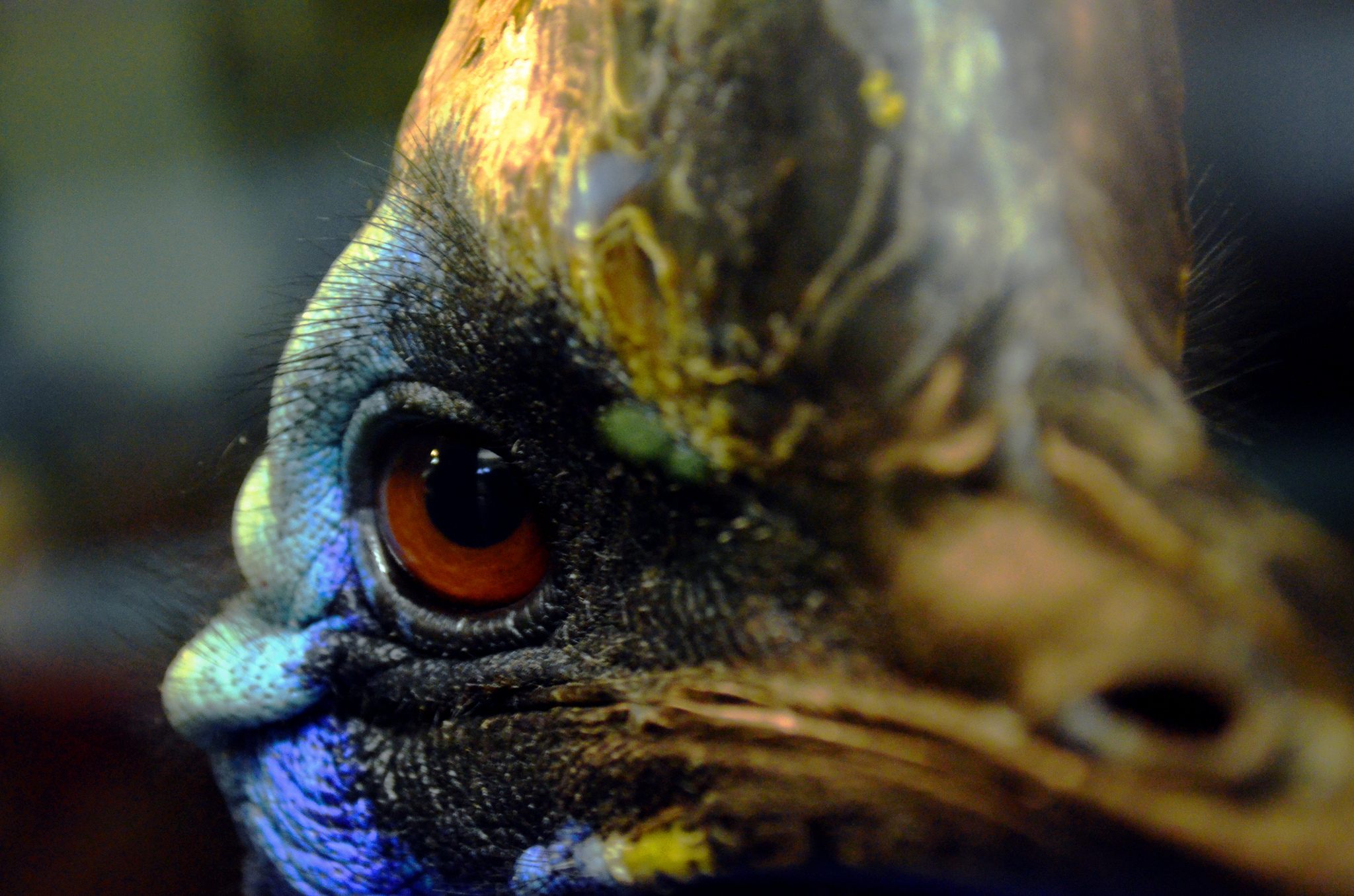
He’s probably not plotting your demise. Probably. (Image: Matt Trollen/Flickr)
Death by cassowary is also not unheard of in New Guinea. Unlike in Australia, where cassowary-human interaction is more often by chance, in New Guinea the cassowary is often actively hunted by the local tribes. However, the deaths have not been surveyed and are largely undocumented. According to Westcott it is not common, and comparable to others situations where humans live in close proximity to large animals. “Horses kill people all the time, cattle kill people all the time. It’s not because they are aggressive animals, it’s because they’re big animals.”
As Westcott, who has done a great deal of field research in New Guinea, says, what will often happen is that the father cassowary will be killed so that the chicks and eggs can be collected. The baby cassowaries will then be raised almost as pets, until they start to get larger and more aggressive, treating the increasingly similar-sized humans like just another cassowary.
“As teenagers they try out their fighting skills, and all that other stuff that teenagers of pretty much any species do. And people get hurt.” Westcott said. “And sometimes people die.”
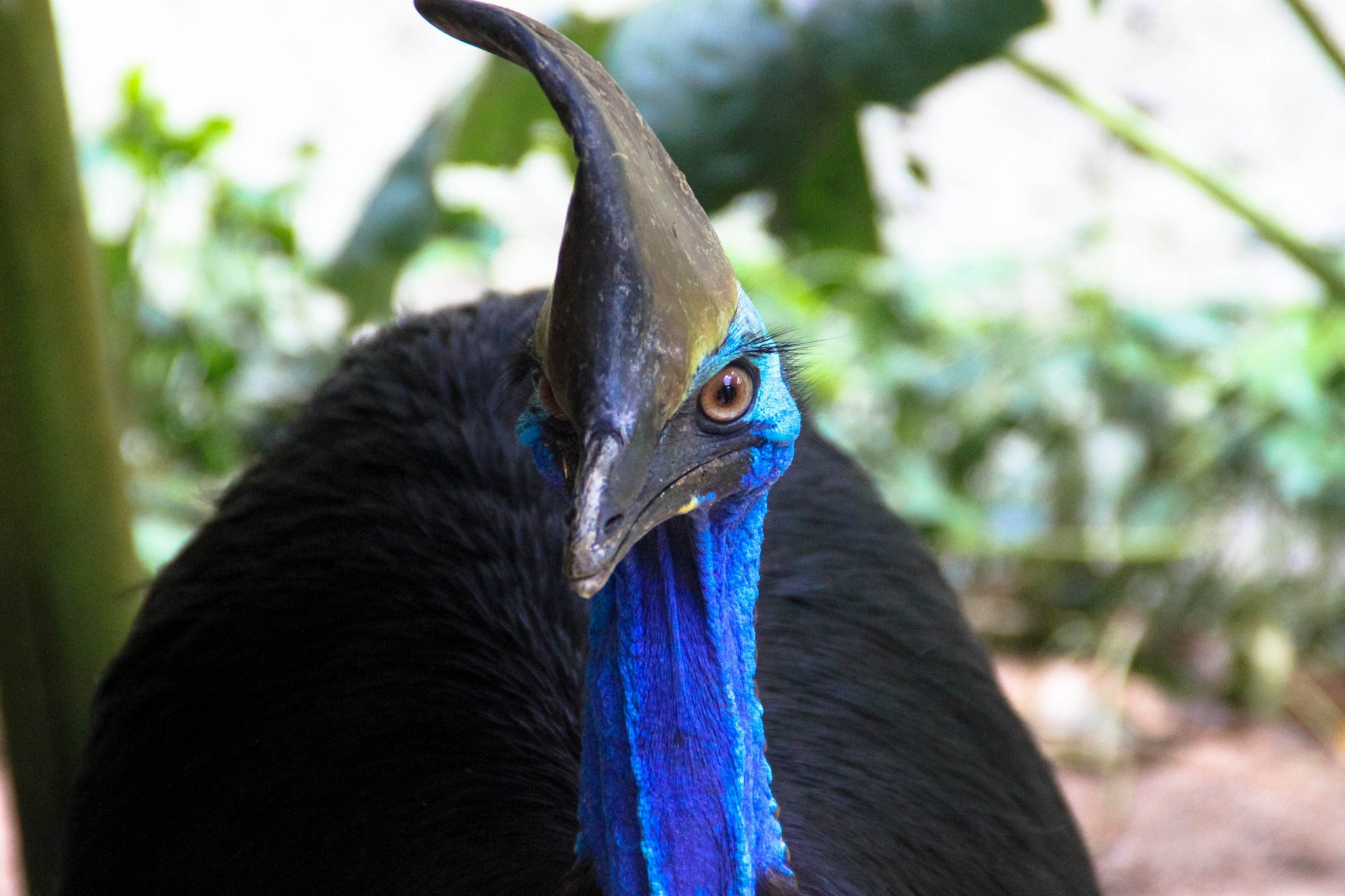
A killer? Me? (Image: Flavia Brandi/Flickr)
However, cassowaries are not especially territorial. “That’s largely because the resources they use don’t mean that that’s a viable way of behaving,” Westcott explains. But like any animal, they are extremely protective of their young. Among cassowaries, the males take care of the young, while the females are the ones out roaming. During breeding season, female cassowaries can become aggressive to fight for the privilege of mating, and they will injure others of their kind, kicking them with their powerful legs and deadly talons. “They’ll chase each other, and they’ll get up and kick each other, and they’ll do damage to each other like that,” Westcott says. “But so will sparrows, and so will horses. That’s just nature.”
Most videos and reports of how violent cassowaries are come from animals that have been kept in captivity, driven psychotic by the inability to roam. It is not a behavior that is innate to the creature. Other large avians like ostriches and emus are just as capable of inflicting harm, they just don’t have the reputation.
According to Westcott, the reason the bird’s assasin label persists is simple: “We don’t associate birds with killing people, and here is a bird that we do know can kill people.” Furthermore, the cassowary “happens to live in Australia where we exaggerate all the dangers beyond belief.”




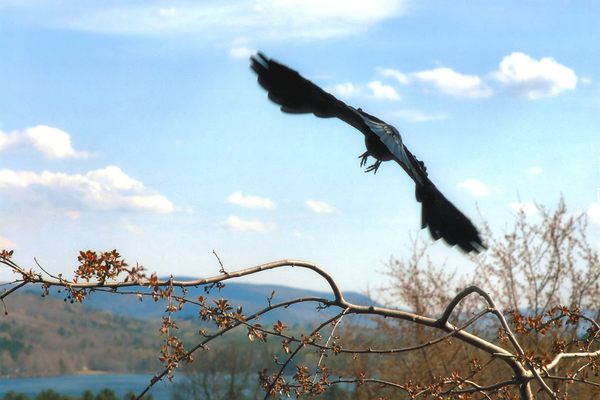











Follow us on Twitter to get the latest on the world's hidden wonders.
Like us on Facebook to get the latest on the world's hidden wonders.
Follow us on Twitter Like us on Facebook